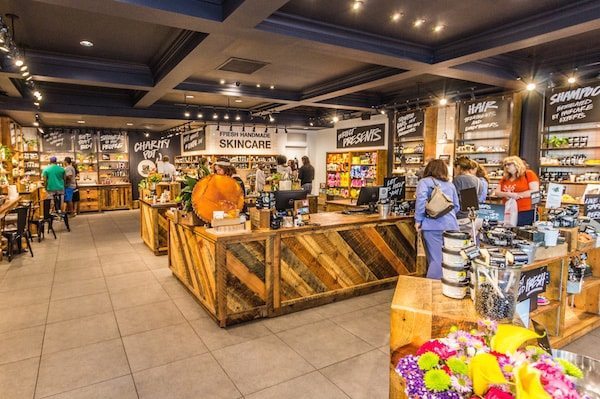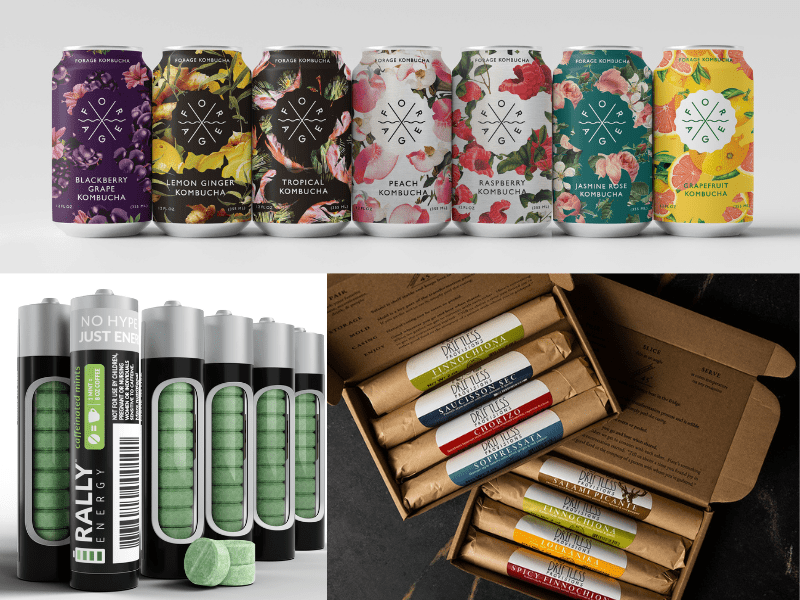One of the axioms of successful businesses, or successful anything, is “start with the end goal in mind,” and this is true for food businesses. It is essential to start with the end goal because that affects strategic decisions like business model design and the capitalization to support the business model’s growth path. For example, if a food entrepreneur has ambitions to be a national brand, there are many investments that need to be made up front to make that business model successful, and the likeliest capitalization path involves outside investor funds with an “exit” or sale of those investor’s shares of the company. Every entrepreneur is on a path, and it is better when that path leads to his or her goals.
However, given that food entrepreneurs have many “big, hairy, audacious goals,” it is worth noting that certain goals should have more priority over others, depending on the stage of the entrepreneur. For example, many food entrepreneurs want their business to reflect their social impact goals. But they shouldn’t do this to the exclusion of the brand building necessary to tell that impact story (and capitalize on it with a premium price) or the long-term financial viability of their business. Sometimes getting more sales so you have enough cash to make payroll takes precedence over longer-term goals like creating social and environmental change. Thus, we always encourage entrepreneurs to take the long view, prioritize goals and to not pursue goals or lines of business that are distracting from the business’ current priorities and financial health.
On our podcast this week, Beth LaShell describes how the Old Fort at Hesperus (in Durango, Colorado) uses this approach of setting priorities (like their all of their programs breaking even) as their team builds a continuum of farmer education programs to support new and beginning farmers. Their sustainable agriculture program includes an educational garden internship, a farmer-in-training program and a market garden incubator. Their programs were built one at a time to suit specific needs of farmers depending on their stage of development.
Beth and team developed the Farmer in Training (FIT) program as a stepping-stone between their internship program and owning an independent business in their incubator after those other programs were already established and the need presented itself. Building discreet programs over time around the larger goal of farmer education has allowed their incubator program to have a high success rate in “graduating” farmers as well as allowing all of their programs to be mostly self-supporting. And, because they practice open book management, everyone knows the impact certain actions have on the bottom line, and thus, are able to make informed decisions as managers with the goal of breaking even in mind. As a result of this focused approach to their operations, they were able to prioritize what is important and build successful programs one at a time that now make up a full suite of offerings to new and beginning farmers.
Food and farm entrepreneurs (and those groups trying to make a better food system, like farm incubators) will always have lots of goals competing for their attention. The good entrepreneurs and managers know how to prioritize goals and optimize their efforts for the goals they have prioritized. This allows them to build financially successful companies and programs and, over time, pursue many more “big, hairy, audacious goals” than they would have otherwise
And now, our roundup of the best food and beverage finance news, events and resources from around the web…
Business Model Insights
- 8 key business learnings from growing Stonyfield Farm to what it is today (New Hope Media) – “When it comes to building your business, you must have some kind of unique selling proposition. Especially in today’s marketplace, product or service superiority is an absolutely prerequisite to success. Any existing competitors will have existing customers, a following and probably more capital than you. In our darkest days, when we were losing ridiculous amounts of money, I created a daily cash flow so I could understand what was financially coming in and out each day. I also learned during this period that we entrepreneurs are pathological optimists and thus most of us, including yours truly, initially tend to minimize expenses and maximize revenues when putting together pro formas. I learned to cut whatever cash income I was expecting by 30-50 percent and conversely to increase my projected expenses and outflows by 30-50 percent. In this way, I built a kind of insurance policy to balance my optimism, and I cannot tell you how many times that saved me from making potentially fatal commitments.”
- When Should Entrepreneurs Write Their Business Plans? (Harvard Business Review)
- Deciding on a co-manufacturer: Insights from one thriving partnership (New Hope Media)

Raising Capital
- A Few Good Fundamentals (Entrepreneurship.org) – “The single most important tool for building new companies or saving dying ones is the deft management of cash flow, that stream of money pouring continually in and out of your company. Your accountant may say your business is profitable. But he or she could be assessing only the profit-and loss statement (which tracks non-cash items as well as dollars) or the balance sheet (a snapshot of a company’s assets and liabilities at one point in time). Just because you are making a profit does not mean you will be successful unless you are generating cash or have access to cash. It’s as fundamental as that.”
- The Psychology of Money (Collaborative Fund)
- Basics of Company Valuation (Entrepreneurship.org)
CPG/National Brands
- Launching in the omnichannel age: a discussion between brandholder and retailer (New Hope Media) – “Let’s start with the fact that the equation of growing a market requires both the retailer and the brand, right? You must have the products and a place to sell them. The whole conversation when you’re building a brand is, how do you get off the shelf? How do you get people excited about your product? So, getting on is one simple part of it, and I think a lot of people focus on that too much. There’s a lot of things that you need to think through beyond just getting it on the shelf. The question is, whatever role you’re playing in the food ecosystem, can you add those capabilities to your offer for the customer so you can participate in that? If you can, you’ll get the growth. If you can’t, the growth will go somewhere else.”
- CPG sales off to slow start in 2018 but with optimistic year-end projections, IRI says (Food Navigator USA)
- 4 Tips for Pitching Your Food or Beverage Product to Grocery Buyers (Allison Ball, via Partnerslate)

Market Trends
- The future of grocery shopping: click or mortar? (New Hope Media) – “Arguments abound that online grocery is over-hyped and especially that the desire for “fresh” will continue to drive consumers to physical stores to touch, feel and select their food, versus other sectors that are more vulnerable. But these arguments miss the point: To compete in the Amazon era, successful retailers across all segments must offer a seamless customer experience across online and offline touchpoints, leveraging physical stores to create new, more sensory, engaging and differentiated experiences.”
- Consumers still hesitate to buy fresh produce online (FoodDive)
- Brands and consumers at odds over e-commerce in new sales channel surveys (New Hope Media)
Farming and AgTech
- Escalating Trade War Sows Fears In Wisconsin’s Agricultural Industry (Wiscontext) – “Farms across the nation are already feeling squeezed. In the last five years, net farm income has dropped by 50 percent and many farm families have diversified, with at least one member earning a salary away from the farm, according to economists. Both the original U.S. steel and aluminum tariffs and China’s retaliatory tariffs will negatively impact farmers. But if China’s second set of tariffs go into effect, it will have a fairly immediate impact on Midwest farmers who grow a lot of corn and soybeans.”
- The Future of Venture Capital at Bayer-Monsanto: It’s Complicated (AgFunder News)
- Dairy farmers are struggling as they are squeezed out of a changing milk market (CNBC)

Deals/M&A
- Food Companies Stuff Cash Flow With Artificial Fillers (Bloomberg) – “A number of food companies have recently been selling their IOUs to deal with the fact that their customers, namely giant retailers like Walmart Inc., are taking longer to pay. The sales bolster cash flows, but critics contend they can make the giant food companies’ finances look better than they truly are as they face increased business pressures. The financing charges can also make those sales less profitable.”
- Nutrition Capital Network: May 2018 Deal Download (New Hope Media)
- M&A in the food industry: What you need to know (FoodDive)
Industry Events
- Hirshberg Entrepreneurship Institute (Gary Hirshberg) – $, 6/14 – 6/15 in Boulder, CO
- Good Food Pitch Slam (FamilyFarmed) – Free to Apply, 6/19 in Chicago, IL
- FaBcap Pitches & Capstone Keynote (FaB Wisconsin) – $, 6/21 in Milwaukee, WI
- Smart Food Expo (Various Orgs) – $, 6/25 – 6/27 in Chicago, IL
- Expo East (New Hope Media) – $, 9/12 – 9/15 in Baltimore, MD
- Ag Tech Day (Wisconsin Golden Angels) – $, 10/2 in Johnson Creek, WI
- ACT Growth and Innovation Summit (Hartman Group) – $, 10/10 in San Diego, CA
- Esca Bona (New Hope Media) – $, 10/22 – 10/23 in Austin, TX





